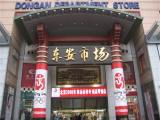Posted under Russia
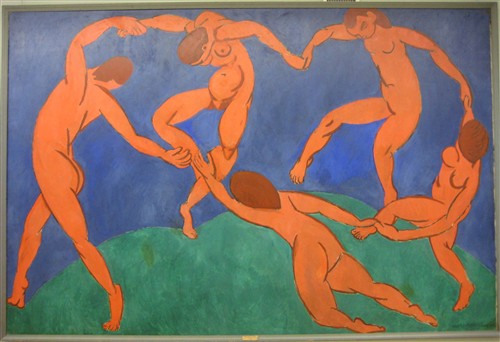
Brace yourself…this one’s a doozie.
Ever since that last day in Budapest, when a drama queen’s emotional breakdown precluded us from experiencing the public bath, I had been wallowing in regret. In the past fourteen months, there have only been a handful of things that we have missed for various reasons – the Everest base camp trek, the Ice Train to Tibet, the glacier hike in New Zealand and, most recently, the public bath in Budapest – though, for the most part, we have spared no expense nor waking hour to satisfy every curiosity and adventurous whim.
As I was sitting on the plane to Saint Petersburg, reading about things to do in Russia, I came across a blurb on the highly-recommended public baths and just about jumped out of my seat. Redemption was within reach!
But five days had passed in Saint Petersburg and we still had not been to the bath. Something about gray, windy, cold, rainy weather just makes the idea of getting naked in a foreign place unappealing. I was determined, though, and on our last evening in St. Pete’s – ironically, the week’s worst day of weather – we found our way to the Krugliye Bani.
The building was dark and uninviting but we found the entrance on the far side and walked into a dingy, smoky entryway with beer bottles and soda cans on the floor. There was no reception desk, just two cement staircases leading right and left. This was not at all what I was expecting. The bath house in Budapest was palatial in comparison, with its bright yellow walls, majestic white columns and sparkling pool. This was more like a 1970s YMCA.
We sat down on a bench to regroup. I decided to walk up the stairs to the women’s bathroom to scope out the scene while Aaron waited with our things. As soon as I opened the door, I was assaulted by nakedness and humidity. It was like stumbling into an orgy. Though there were no men present and no one was having sex, the shock value was equivalent. As I glanced around, trying to keep my bug-eyed expression in check, a middle-aged woman – the only other clothed person in the room – greeted me warmly in Russian. I don’t know why I was expecting at least some kind of English signage or an English-speaking person inside this place to guide me through the process – we haven’t had that luxury anywhere else in Russia – but I was nonetheless completely thrown off when I found myself standing in this room full of naked women and completely unable to communicate. After a few awkward moments, I smiled, said “Spasiba.” (thank you), and scurried out the door.
Ladies and gentlemen, I confess that, at that very moment, I faltered. I walked down the stairs to the bench where my husband was waiting patiently and said, only half-sarcastically, “Ready to go?” After all my tough talk, I was going to punk out once again. I sat down next to Aaron, explained what I had seen up there, and then sat, pondering. After a few minutes, we made a command decision. We were going in! After dividing the items from the backpack into two separate bags, we nervously went our separate ways, vowing to meet downstairs in an hour.
These are our stories.
Tina:
I checked my coat with a dour-faced woman at the bottom of the stairs and walked slowly back up to the bathroom door, my uncertainty exacerbated to dread. Wearing my warmest smile, intended to mask my discomfort (however unsuccessfully), I paid my admission fee of 25 rubles (about US$1) and followed the attendant’s gesturing hand toward the lockers. When I saw that there were no locks on the lockers, it suddenly occurred to me that I was carrying every one of my credit cards and forms of identification on my person. I also suspected that this might be enough to make Aaron, the more sensible of the two of us, change his mind about the bath altogether. I hesitated for a moment and then decided to roll the dice.

There were naked women all around me, women of all ages and shapes, appearing relaxed and uninhibited and taking little notice of the bug-eyed tourist feeling like Eve in the Garden of Eden when she first becomes conscious of her nudity. Being inconspicuously naked on the edge of the locker room, though, was only the first step. We’ve all changed clothes at a gym or a pool at one time or another but that nudity lasts but a few seconds. Walking naked across the locker room to ask for directions really lifted me out of my comfort zone. Feeling (and surely looking) like a deer in the headlights, I sauntered over to the attendant, who pointed toward a door on the far side of the locker room.
The door led to a large dry sauna with several long wooden benches. The aroma of steeped birch leaves wafted into my nose – the scent was pleasant and relaxing, it smelled like Aveda. In this sauna, women were bent over round plastic tubs, lathering their bodies and washing their hair. Bunches of leafy birch twigs lay about. I walked through the dry sauna, through another door into the wet sauna. This was the smallest and most crowded room with an elevated sauna deck full of naked, sweaty bodies. Climbing the stairs, I found an open spot on the L-shaped bench, sitting shoulder-to-shoulder with two ladies. The hot, steamy, birch-infused air was wonderfully soothing and, finally, I began to relax. I closed my eyes and let the steam engulf me in aromatic warmth. I could hear the sound of fluttering birch bundles as women gently whipped their flesh. This is nice, I thought.
I perked up to the soft, chattering of a group of young women ascending the sauna stairs. The sauna deck was now filled to capacity as those of us on the bench scooted closer to make room for the newcomers. A couple of the girls laid their towels down on the floor of the deck. As they were getting situated, I could hear the sizzle of the coals as someone increased the heat. The air was becoming unbearably hot and thick, as if birch bundles were being burned atop the coals. I closed my eyes again, trying to find my happy place.
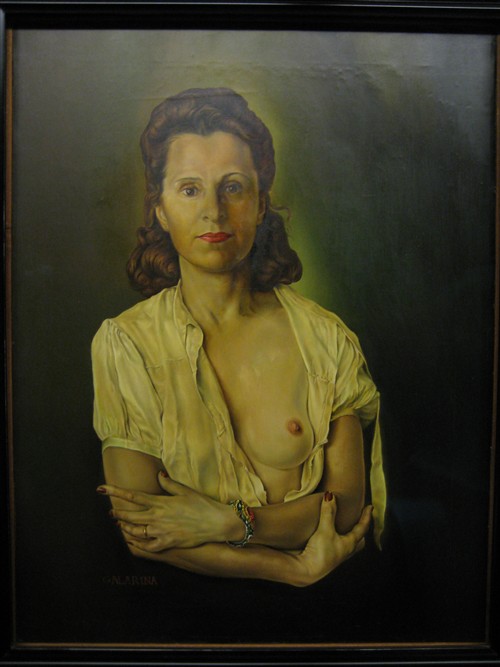 When I opened them about thirty seconds later, one of the young women on the floor had begun a naked yoga sequence. This exercise took the word “uninhibited” to a whole new level. Now, let me be clear that this was a small sauna. This sequence of yoga postures was being performed less than three feet away from me. I was not bothered by it in the slightest – I was mesmerized actually. Yoga practice is quite beautiful to watch. I’ve just never seen it done naked and in such close proximity. It was, however, by this time growing excruciatingly hot. With my face on the verge of melting, I took my naked, sweaty self down the stairs and back to the lockers. With visions of naked yoga racing through my mind, I dressed quickly and walked downstairs. I had been inside for less than half an hour but decided that it was enough for today.
When I opened them about thirty seconds later, one of the young women on the floor had begun a naked yoga sequence. This exercise took the word “uninhibited” to a whole new level. Now, let me be clear that this was a small sauna. This sequence of yoga postures was being performed less than three feet away from me. I was not bothered by it in the slightest – I was mesmerized actually. Yoga practice is quite beautiful to watch. I’ve just never seen it done naked and in such close proximity. It was, however, by this time growing excruciatingly hot. With my face on the verge of melting, I took my naked, sweaty self down the stairs and back to the lockers. With visions of naked yoga racing through my mind, I dressed quickly and walked downstairs. I had been inside for less than half an hour but decided that it was enough for today.
I needed a beer. I found one in a tiny snack bar just down the stairs and watched Russian television as I waited to hear about Aaron’s experience.
Aaron:
As I waited in the queue outside the men’s locker room entrance, my heart raced and my mind calculated how the scene would play out. With the locker room in plain view and scores of men unabashedly strolling around naked (and when I say naked, I mean the Full Monty), I was a little intimidated. When it was my turn, I approached the gruff attendant and with a meek smile blurted out, “I don’t speak Russian”. Followed by: “Locker”? “Sheet”? Clearly annoyed by either my lack of Russian fluency or my total ignorance of the proper etiquette, he assigned me a locker and handed me a sheet but refused to take any money.
I walked to the locker and immediately noticed that there was no lock and no way to secure the door. Refusing to let a little distrust get in the way of my Russian bath experience, I removed my money belt (which contained my passport and a wad of US Dollars) and my wallet, and stuffed them into the bottom of the locker. As I scanned the locker room, I saw dozens of men sitting on benches, mostly naked, reading, drinking beer, and engrossed in conversation. It was a very social affair. While slowly stripping down, I devised a game plan.
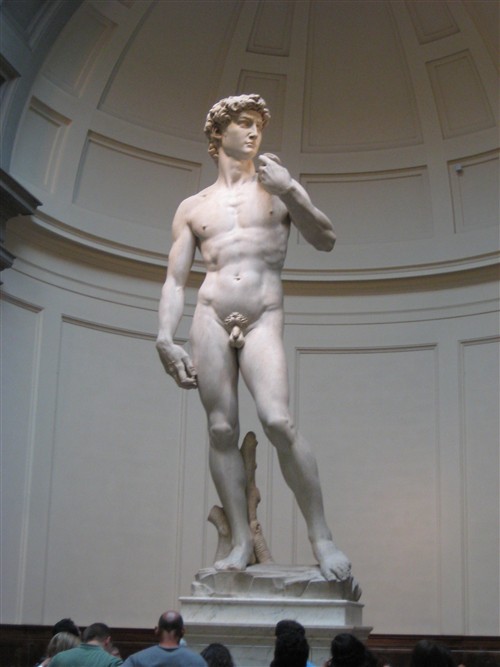 With no signage that I could decipher, I walked, stark naked, in what appeared to be the right direction. For anyone who has ever been in a locker room, you understand the awkward nature of walking around naked, when everyone else is naked, while trying not to make eye contact. But looking down to avoid eye contact all you see is privates. It’s a no win situation.
With no signage that I could decipher, I walked, stark naked, in what appeared to be the right direction. For anyone who has ever been in a locker room, you understand the awkward nature of walking around naked, when everyone else is naked, while trying not to make eye contact. But looking down to avoid eye contact all you see is privates. It’s a no win situation.
I opened the door and found a huge hall filled with more naked men and at least thirty open shower stalls arranged in the middle of the room. Sinks and benches lined the outer walls. Men vigorously soaped themselves using big plastic Tupperware bowls as wash basins. Most of the shower heads were free flowing, which I found baffling. Isn’t that a waste of water? Are they reserved? Do I just pick one or is there some sort of system? Still clueless, I found a stall that appeared to be unoccupied and took a quick rinse.
We had read about a wonderful, heated outdoor pool at this bath and I wondered where it was. As I stood just outside my shower stall, a man motioned for me to follow him. Thinking that the outdoor pool might be behind door number two, I followed. Unexpectedly, we entered the sauna. I climbed the short staircase and sat my naked bottom on the wooden L-shaped bench. In front of the bench was a small area where bathers took turns energetically whipping themselves with leafy, wet bundles of birch twigs. We had read about this phenomenon beforehand but it was still entertaining. I sat there watching in wonder as men stood up in succession and performed their cleansing rituals, beating themselves with handfuls of birch. I had missed the chance to buy my own leaves so I simply sat there, sweating.
I walked back to my locker, primarily to make sure that my stuff was safe, but also to cool down. I hadn’t brought any drinks or snacks so I simply sat there, trying not to look awkward. As I sat, I couldn’t help but relate the experience to what it would feel like being a newbie in prison. Now, I’ve never been incarcerated, never been arrested, but I’ve seen enough movies to have an idea of what prison life is like. Sitting in this foreign bath, with only one word in my Russian vocabulary and no idea about the bath etiquette, I couldn’t help feeling like fresh meat – the new kid on the cell block who has no idea what the unspoken rules are, who to trust, and who to fear.
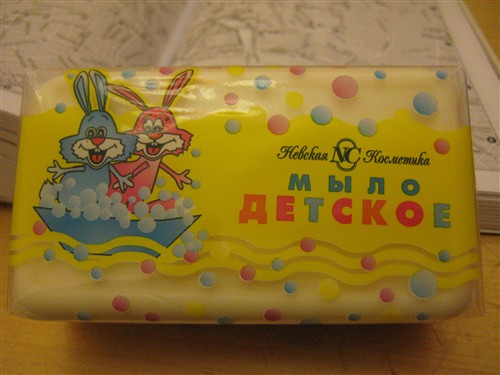 In the midst of this train of thought, the man who had earlier beckoned me to follow him into the sauna, appeared (naked, of course) and handed me a brand new, sealed bar of soap with pink and blue bunnies on the wrapper, and said, “Present.” with a heavy Russian accent. You’ve got to be kidding me! What should I do? Uncomfortably, I accepted the soap and quickly went for my clothes. My prison survival instincts were screaming that that was my queue to get out of there – pronto – before I became someone’s bath time buddy.
In the midst of this train of thought, the man who had earlier beckoned me to follow him into the sauna, appeared (naked, of course) and handed me a brand new, sealed bar of soap with pink and blue bunnies on the wrapper, and said, “Present.” with a heavy Russian accent. You’ve got to be kidding me! What should I do? Uncomfortably, I accepted the soap and quickly went for my clothes. My prison survival instincts were screaming that that was my queue to get out of there – pronto – before I became someone’s bath time buddy.
One of the best parts of our trip has been to experience the local cultures in countries around the world. The experiences are often good, sometimes bad, and sometimes they are just plain shocking. One thing is for sure…with an open mind and an adventurous spirit, life is always interesting.
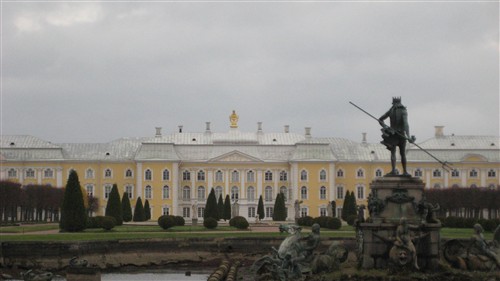
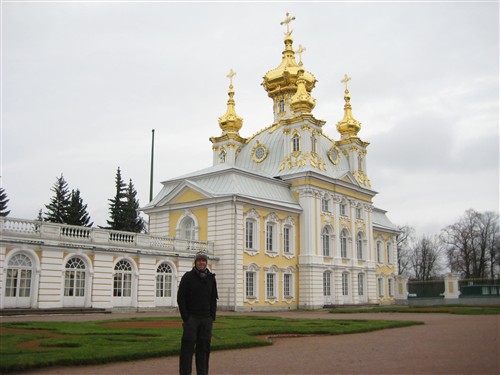 Petrodvorets is a vast estate containing several stunning palaces, manicured gardens, and an impressive array of fountains and bronze statues. It was founded in the early 18th century by Peter the Great, who, on a visit to France, was impressed by Louis XIV’s Palace of Versailles and aspired to build his own, grander version. We entered the upper gardens at the rear of the estate and strolled through the clearly out of season gardens. The magnificent Grand Palace, its beautiful white and yellow façade flanked by two golden-domed chapels, was an impressive sight in the distance. The original palace was almost totally destroyed during the Nazi occupation of Russia in WWII and the Palace that is seen today is a reconstruction of the original.
Petrodvorets is a vast estate containing several stunning palaces, manicured gardens, and an impressive array of fountains and bronze statues. It was founded in the early 18th century by Peter the Great, who, on a visit to France, was impressed by Louis XIV’s Palace of Versailles and aspired to build his own, grander version. We entered the upper gardens at the rear of the estate and strolled through the clearly out of season gardens. The magnificent Grand Palace, its beautiful white and yellow façade flanked by two golden-domed chapels, was an impressive sight in the distance. The original palace was almost totally destroyed during the Nazi occupation of Russia in WWII and the Palace that is seen today is a reconstruction of the original.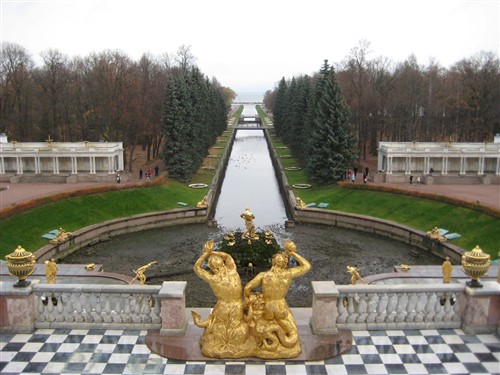 As we approached the front of the Palace we saw the water features for which Petrodvorets is most famous. The Grand Palace sits atop a hill, overlooking the magnificent Grand Cascade – a multi-tiered fountain stepping down the hill, enabling the water to cascade brilliantly downward into Water Avenue, a canal extending all the way to the Gulf of Finland. Petrodvorets has more than 150 fountains adorned with gilded statues but, unfortunately for us, none of them were working. I tried to envision the grandeur of Petrodvorets, but fountains without water are simply not very impressive. Disappointed by the fountains and uninspired by the photos of the interior that we saw in the gift shop, we decided not to go inside. Instead, we strolled leisurely around the palace grounds and then headed for the bus stop, stumbling upon a beautiful onion-domed Orthodox church along the way.
As we approached the front of the Palace we saw the water features for which Petrodvorets is most famous. The Grand Palace sits atop a hill, overlooking the magnificent Grand Cascade – a multi-tiered fountain stepping down the hill, enabling the water to cascade brilliantly downward into Water Avenue, a canal extending all the way to the Gulf of Finland. Petrodvorets has more than 150 fountains adorned with gilded statues but, unfortunately for us, none of them were working. I tried to envision the grandeur of Petrodvorets, but fountains without water are simply not very impressive. Disappointed by the fountains and uninspired by the photos of the interior that we saw in the gift shop, we decided not to go inside. Instead, we strolled leisurely around the palace grounds and then headed for the bus stop, stumbling upon a beautiful onion-domed Orthodox church along the way. When we finally reached the train station it was late afternoon. We had just missed the hourly train back to St. Petersburg. We had an hour to kill and we were starving. Our only option appeared to be a small restaurant/bar/discotheque just outside the train station. Unable to decipher the Russian menu, we ordered the few things that we recognized: shawerma sandwiches, a blini (Russian crepe) and beer. Our cashier, as uncomfortable with the language barrier as we were, eagerly obliged. We sat down at a table in the smoky, circular room (complete with dance floor and disco ball), watching and being watched by everyone else in the room. It was an educational hour.
When we finally reached the train station it was late afternoon. We had just missed the hourly train back to St. Petersburg. We had an hour to kill and we were starving. Our only option appeared to be a small restaurant/bar/discotheque just outside the train station. Unable to decipher the Russian menu, we ordered the few things that we recognized: shawerma sandwiches, a blini (Russian crepe) and beer. Our cashier, as uncomfortable with the language barrier as we were, eagerly obliged. We sat down at a table in the smoky, circular room (complete with dance floor and disco ball), watching and being watched by everyone else in the room. It was an educational hour.
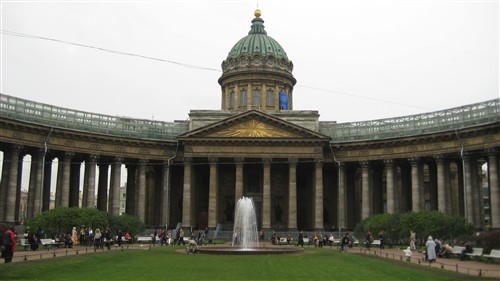
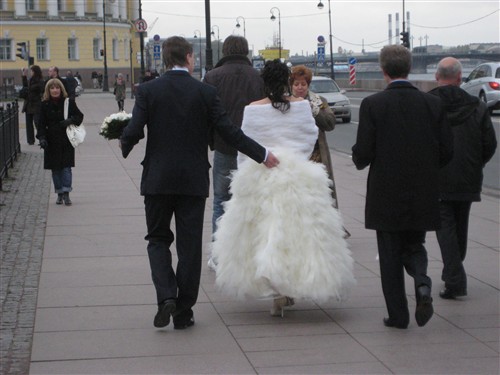 After St Isaacs, we finally headed to the river, across the bridge toward the St Peter & Paul Fortress. It was a Thursday afternoon so we were pleasantly surprised when we came upon several small wedding parties on the Strelka (tongue of land) on Vasilevsky Island. The young brides wore pristine white furs around their otherwise bare shoulders. The happy couples were surrounded by musicians and boisterous revelers. We observed two interesting wedding traditions as we discreetly watched from above. At the river’s edge are several granite spheres and the couple must simultaneously throw two glasses against the sphere, smashing them to pieces and inciting cheers from the crowd. Then they light the wick of a small cannon, which shoots firecrackers over the Neva to the sound of more applause.
After St Isaacs, we finally headed to the river, across the bridge toward the St Peter & Paul Fortress. It was a Thursday afternoon so we were pleasantly surprised when we came upon several small wedding parties on the Strelka (tongue of land) on Vasilevsky Island. The young brides wore pristine white furs around their otherwise bare shoulders. The happy couples were surrounded by musicians and boisterous revelers. We observed two interesting wedding traditions as we discreetly watched from above. At the river’s edge are several granite spheres and the couple must simultaneously throw two glasses against the sphere, smashing them to pieces and inciting cheers from the crowd. Then they light the wick of a small cannon, which shoots firecrackers over the Neva to the sound of more applause.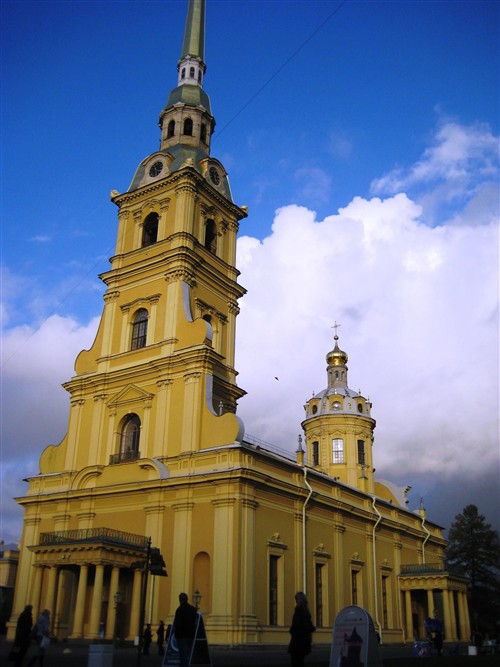 Tired and cold after our busy program, we walked briskly toward the nearest metro stop. On the way, we spotted some blue mosaic onion domes protruding above the tree line. We detoured a few steps to get a closer look and realized that we had stumbled upon the Saint Petersburg Mosque – the most northerly mosque in the world. When it was built in 1913, it was the largest mosque in Europe.
Tired and cold after our busy program, we walked briskly toward the nearest metro stop. On the way, we spotted some blue mosaic onion domes protruding above the tree line. We detoured a few steps to get a closer look and realized that we had stumbled upon the Saint Petersburg Mosque – the most northerly mosque in the world. When it was built in 1913, it was the largest mosque in Europe.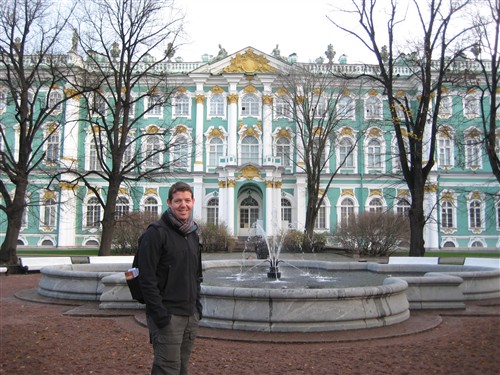
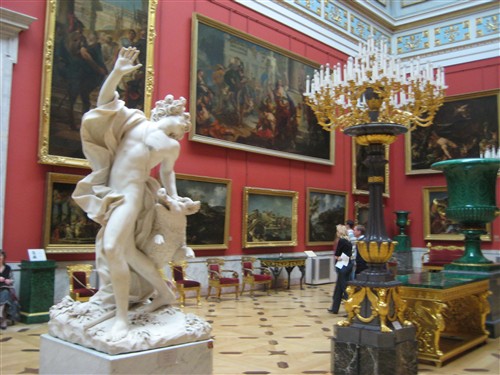 Back at the Hermitage, we bought our tickets, checked our backpack and coats in the cloakroom (every place has a cloakroom and its usually free), and began to explore. We had a list of recommended highlights and decided to search them all out before concentrating the bulk of our culture-absorbing energy on the European paintings.
Back at the Hermitage, we bought our tickets, checked our backpack and coats in the cloakroom (every place has a cloakroom and its usually free), and began to explore. We had a list of recommended highlights and decided to search them all out before concentrating the bulk of our culture-absorbing energy on the European paintings. The Hermitage is remarkable for the sheer size of its collection, the number of well-known paintings, and particularly for the number of works by famous European painters. The collection was mostly amassed by Catherine the Great. Among the famous artists represented are Matisse, Van Gogh, Renoir, Rubens, Cezanne, Monet, Degas, Picasso, Pissarro, Gauguin, da Vinci, Rembrandt, Rodin and Michelangelo. In the Hermitage’s collection, you don’t see one or two Picassos or Matisses or Rembrandts but rather entire rooms full of Matisses, Picassos and Rembrandts. The works, themselves, are brilliant, of course, but we were simply gobsmacked by the volume of famous work in the museum. It was impressive.
The Hermitage is remarkable for the sheer size of its collection, the number of well-known paintings, and particularly for the number of works by famous European painters. The collection was mostly amassed by Catherine the Great. Among the famous artists represented are Matisse, Van Gogh, Renoir, Rubens, Cezanne, Monet, Degas, Picasso, Pissarro, Gauguin, da Vinci, Rembrandt, Rodin and Michelangelo. In the Hermitage’s collection, you don’t see one or two Picassos or Matisses or Rembrandts but rather entire rooms full of Matisses, Picassos and Rembrandts. The works, themselves, are brilliant, of course, but we were simply gobsmacked by the volume of famous work in the museum. It was impressive. That said, while the collections of art and artifacts were on par with other world class museums, the Hermitage fell short of the bar in the “user-friendliness-for-foreign-citizens” category. The best example of this is the lack of English-language captions in almost all galleries other than the European paintings. In this age of globalization, in which English is the international language of business, we found it both disappointing and telling that such a prestigious national museum has failed to modernize. The European paintings were the highlight for us – they did have English captions – and Hermitage was still a great experience.
That said, while the collections of art and artifacts were on par with other world class museums, the Hermitage fell short of the bar in the “user-friendliness-for-foreign-citizens” category. The best example of this is the lack of English-language captions in almost all galleries other than the European paintings. In this age of globalization, in which English is the international language of business, we found it both disappointing and telling that such a prestigious national museum has failed to modernize. The European paintings were the highlight for us – they did have English captions – and Hermitage was still a great experience.
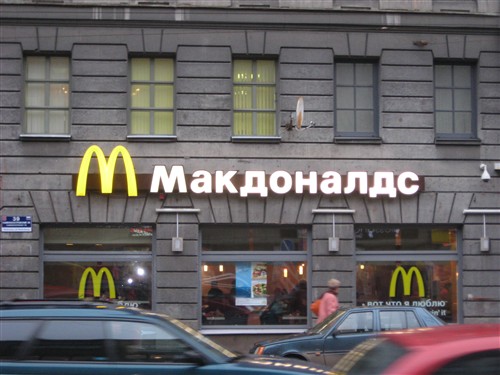 From the bus stop, we struggled a bit to find the metro station but eventually found ourselves descending into the cavernous recesses of the underground railway system. Disconcerted by the lack of metro maps around the stations, we did find one map that listed the stops in both English and Russian characters. We were astonished by the frequency of the trains – arriving every minute-and-a-half or so compared to the five-to-seven minute intervals in other busy international cities – and also by the masses of riders on each train.
From the bus stop, we struggled a bit to find the metro station but eventually found ourselves descending into the cavernous recesses of the underground railway system. Disconcerted by the lack of metro maps around the stations, we did find one map that listed the stops in both English and Russian characters. We were astonished by the frequency of the trains – arriving every minute-and-a-half or so compared to the five-to-seven minute intervals in other busy international cities – and also by the masses of riders on each train.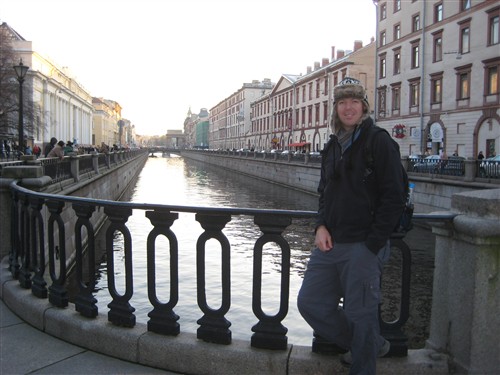
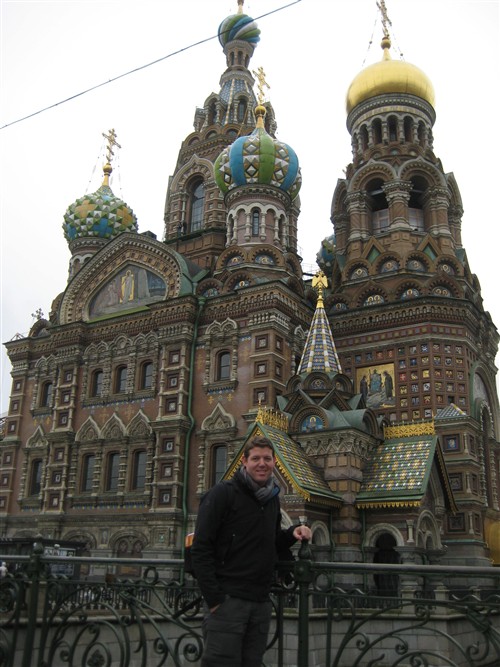 That afternoon, we were headed toward the Church on the Spilled Blood, constructed on the spot where Alexander II, Emperor of Russia, was mortally wounded in 1881. Built from 1883 – 1907, the colorful, onion-domed church contrasts the city’s overwhelmingly baroque style though it manifests the quintessential style of Russian Orthodox churches of the 17th century.
That afternoon, we were headed toward the Church on the Spilled Blood, constructed on the spot where Alexander II, Emperor of Russia, was mortally wounded in 1881. Built from 1883 – 1907, the colorful, onion-domed church contrasts the city’s overwhelmingly baroque style though it manifests the quintessential style of Russian Orthodox churches of the 17th century.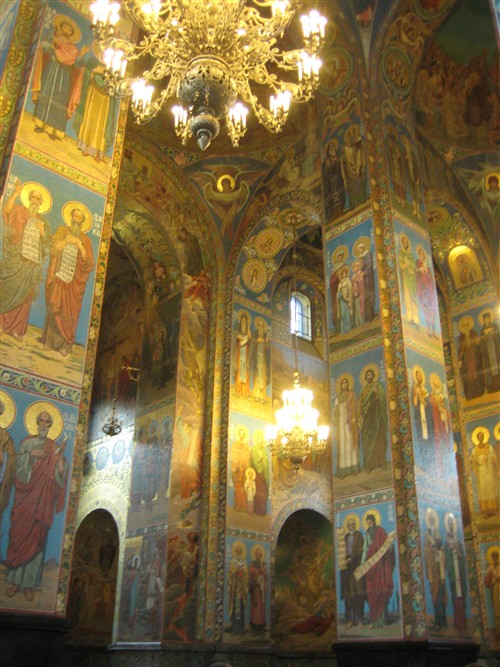 At first glance, the interior walls looked to be covered in soft, golden murals but we soon realized that the medium was mosaic. Scenes from the New Testament in beautiful, bright-colored mosaic ran from the semi-precious stone base to the ceiling, covering every window frame, support beam and arch. The arrangement of the subjects in the mosaics corresponded to the canons of Orthodox iconography. The southern wall portrayed the Nativity and the Baptism of Christ. The northern wall was devoted to scenes of the miracles performed by the Savior. The western wall featured scenes from the Passion. The iconostasis was a masterwork of lace-cut Italian marble. The floor, made from various kinds of Italian marble, was designed to look like a mosaic carpet.
At first glance, the interior walls looked to be covered in soft, golden murals but we soon realized that the medium was mosaic. Scenes from the New Testament in beautiful, bright-colored mosaic ran from the semi-precious stone base to the ceiling, covering every window frame, support beam and arch. The arrangement of the subjects in the mosaics corresponded to the canons of Orthodox iconography. The southern wall portrayed the Nativity and the Baptism of Christ. The northern wall was devoted to scenes of the miracles performed by the Savior. The western wall featured scenes from the Passion. The iconostasis was a masterwork of lace-cut Italian marble. The floor, made from various kinds of Italian marble, was designed to look like a mosaic carpet.